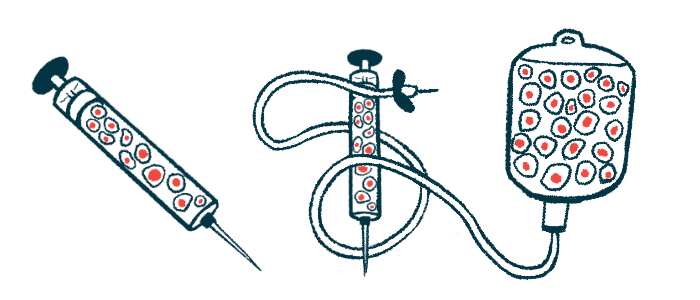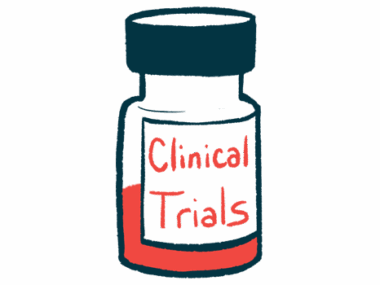Low-intensity stem cell transplants may benefit SCD patients: Study
Treatment may help protect lungs, 'stop cycle of lung injury' in adults
Written by |

Low-intensity stem cell transplants, which use milder conditioning regimens, appear not to damage the lungs and may even improve lung function in adults with sickle cell disease (SCD), according to a new study led by scientists from the National Institutes of Health (NIH).
“By using a low-intensity blood stem cell transplant for sickle cell disease, we may be able to stop the cycle of lung injury [seen in SCD patients] and prevent continued damage,” Parker Ruhl, MD, an associate research physician and pulmonologist at the NIH, and the study’s first author, said in an agency press release.
These findings may prove informative for people with SCD who may be thinking about having a transplant, Ruhl said, though she cautioned that further study is needed.
This study, “Pulmonary Function After Non-Myeloablative Hematopoietic Cell Transplant for Sickle Cell Disease,” was published in the Annals of the American Thoracic Society.
Findings may ‘help reassure’ patients considering stem cell transplants
SCD is a genetic disease in which red blood cells take on a sickle-like shape and become sticky, slowing or blocking blood flow into tissues and organs in the body. This can lead to sudden episodes of severe pain and continued damage, especially to the lungs.
A stem cell transplant involves replacing a patient’s blood-forming stem cells in the bone marrow with healthy ones from a donor. The transplanted stem cells then start to make new, healthy red blood cells, offering a potential cure for SCD.
However, conditioning regimens typically are used to destroy a patient’s own stem cells and make room in the bone marrow for the transplanted stem cells to grow. Such regimens also prevent the patient’s body from rejecting the new cells. These conditioning regimens, which generally include high doses of chemotherapy, are associated with a series of risks and side effects.
While low-intensity, or non-myeloablative, conditioning regimens may be slightly less effective, they carry fewer risks and are less likely to result in long-term complications, such as lung damage. These types of conditioning regimens don’t destroy all stem cells found in a patient’s bone marrow and suppress the immune system just enough to avoid rejection.
Ruhl’s team aimed to find out if stem cell transplants conducted along with a low-intensity conditioning regimen may offer additional benefits for SCD adults with already vulnerable lungs.
Without the ongoing injury, it’s possible that healing of lung tissue might occur, and this finding should help reassure adults living with sickle cell disease who are considering whether to have a low-intensity stem cell transplant procedure that their lung health will not be compromised by the transplant.
Their study included 97 adults with SCD — 41 women and 56 men — with a mean age of 31.8. All underwent a low-intensity blood stem cell transplant between 2004 and 2019 at the NIH’s Clinical Center in Bethesda, Maryland. The patients were then followed for up to three years.
The main goal was to check if lung function stayed stable over those three years after the stem cell transplant. This was assessed based on forced expiratory volume in one second (FEV1), a commonly used tool that measures how much air a patient can forcefully exhale in one second.
Median FEV1 was similar before and three years after the stem cell transplant (68.3% vs. 69.2%), with no significant differences between the two values, indicating that lung function did not worsen over time. Higher values of FEV1 indicate better lung function.
The diffusing capacity of the lungs for carbon monoxide, which measures how well oxygen moves from the lungs into the bloodstream, improved by 3.7%, and the distance walked in a six-minute walk test increased by 25.9 meters (about 85 feet), indicating better exercise capacity.
“Without the ongoing injury, it’s possible that healing of lung tissue might occur, and this finding should help reassure adults living with sickle cell disease who are considering whether to have a low-intensity stem cell transplant procedure that their lung health will not be compromised by the transplant,” Ruhl said.
In the future, “multicenter studies are needed to evaluate the long-term lung health effects of [blood stem cell transplants] for SCD in adults and children,” the researchers wrote.






